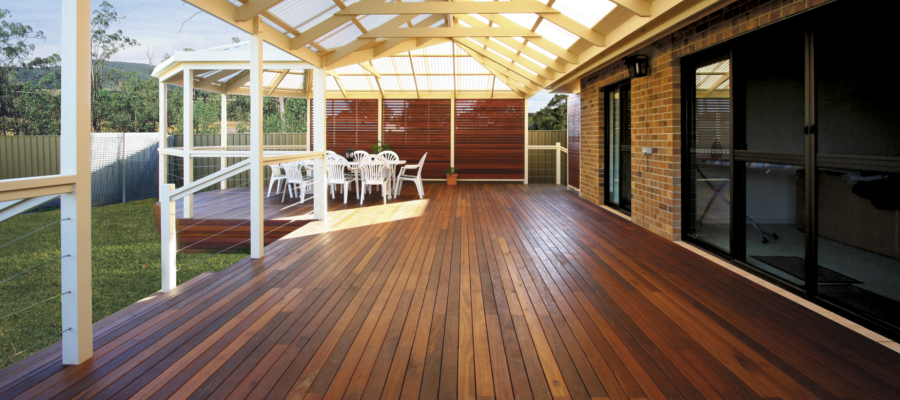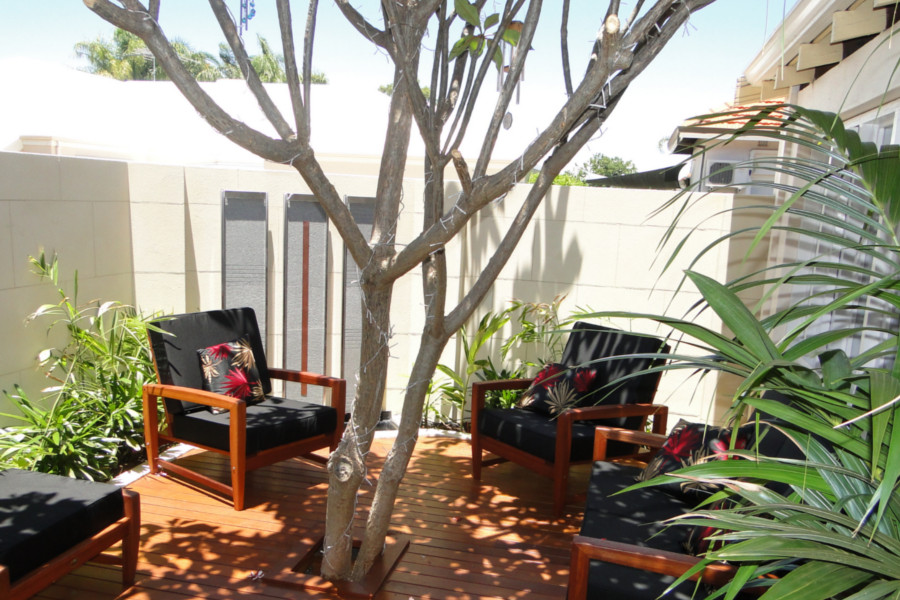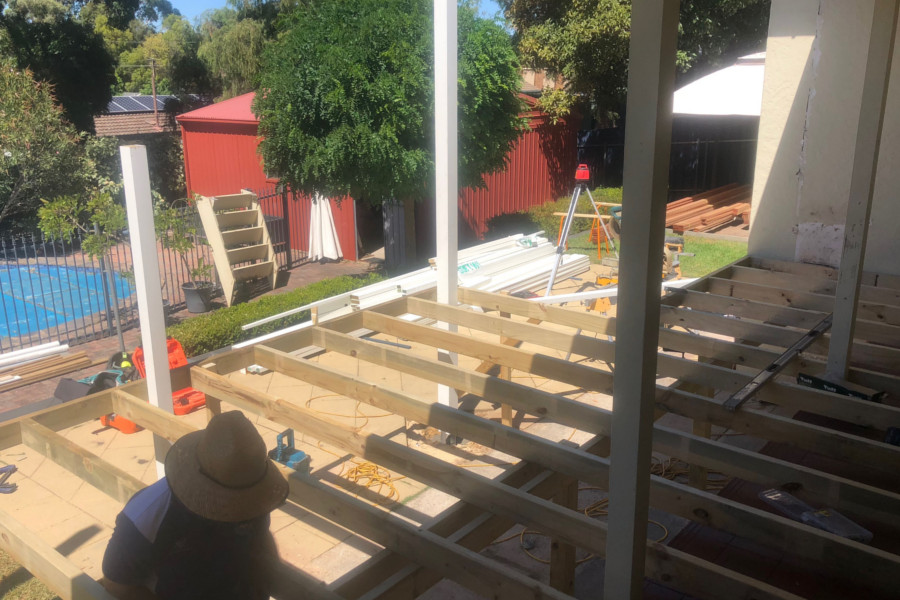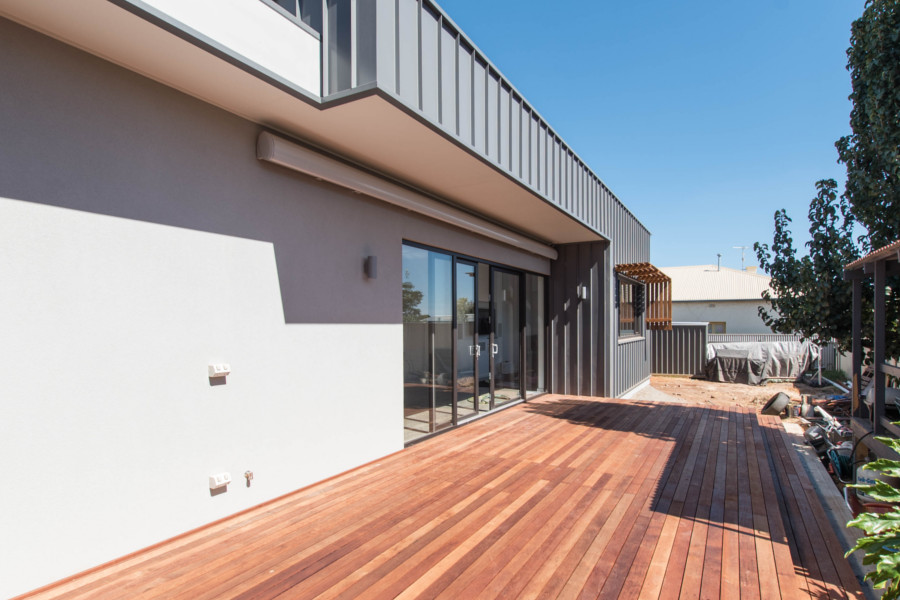
If you want your deck to live up to its potential, choosing the right timber for your decking project is essential. Your deck should be fit for purpose, it should be able to stand up to the elements, it should be protected against rot and insects, and of course, it should look good.
Decking should last at least 15 years if left unstained or unpainted. When given adequate protection in the form of a good stain or oil, the lifespan of your deck is extremely long. To make sure your deck lives a full life, and retains its good looks into old age, it’s important to choose the right timber for the job. So which timber is right for you?
Choosing between hardwood, softwood and composite
Decking material can be sectioned into three main groups: softwoods, hardwoods and composites. As a general guide, softwoods come from evergreen coniferous trees, hardwoods come from broad-leaved trees, and composites are man-made from plastics and mixtures of organic and synthetic materials.
Within each group there are different types of boards available. To make the right choice, you will need to think about what your deck will be used for, and the weather it will likely encounter (salt water, frost, excessive rain or sun).
Softwood decking options
Softwoods are a popular choice for decking, as they are cheaper and easier to work with than hardwoods. When appropriately treated (ACQ or OPX treatments are both excellent options) and kiln dried, Softwood decking offers great resistance to weathering, rot and termites, as well as minimal surface checking and movement once installed. At the prices Softwoods can offer you for these products it’s a great competitive option. Furthermore you may have reservations about the appearance of Softwood decking having previously seen green tinged CCA treated pine. We’re happy to say that this look is a thing of the past as the newer (and safer) treatment methods are clear in finish and allow the natural pale colour of pine to show through. Pine decking is also very versatile in that it’s naturally pale colouring allows it to wear virtually any shade of stain brilliantly.
Composite decking options
A large number of composite decking products have come to Australia in the last decade or so. They are available in lots of different shades and textures as well as widths and sizes. We find that in theory composite decking is a great idea. The use of recycled materials and the ability to provide large numbers of set lengths appeals to us greatly.
However, at Softwoods we have chosen up to this point not to stock composite decking for a number of reasons.
We’ve found that there have been issues with the quality of composite products over the years. Primarily we’ve seen the absorption of water and swelling of the boards when an end is cut.
In addition to this, we’ve been wary of stocking composite products due to how hot they become in direct sun, as well as their tendency to stain, the difficulty of removing scratches and instances of mould.
We will continue to monitor the market, and we’ve seen good improvements with a number of these issues in some products, but until there’s one that we feel is equal to or better performing than timber we will be steering clear.
Hardwood Decking options
Hardwood timber is an excellent choice for decking. It is typically more durable, more resilient to pests, fungi and rot, and is richer in colour and grain. However, along with these benefits comes an extra cost and it’s usually more expensive.
There are also a wide range of hardwood decking timbers available which all have different benefits. Those primarily stocked by Softwoods are listed briefly below:
- Merbau: Deep red-brown in colour, extremely durable, some initial tannin bleed.
- Kapur: Similar to Merbau, but cheaper and not as durable. Light reddish brown, great grain.
- Ironbark: Very strong, with long life expectancy. Light grey, red or dark brown.
- Spotted Gum: Strength and durability similar to Merbau. Light to dark brown in colour with a distinctive wavy pattern in the grain.
- Blackbutt: Strength and durability similar to Merbau. Golden yellow to pale brown, sometimes with a slight pink tinge. Noted for its resistance to moderate bushfires.
- Jarrah: Low strength rating, but very durable. Vibrant red-brown in colour.
- River Red: Strength and durability same as Jarrah. Deep to light red and brown in colour.
What to Consider when choosing your decking
Use: Is your deck likely to have a lot of traffic over it? Is it undercover or directly exposed to the elements? Which colour decking boards will suit your home or outdoor area? Are wide boards more appropriate?
Weather: Will the deck come in contact with a lot of direct sunlight? Excessive rain? Frost and snow? Think about what your deck will have to withstand, and choose a deck that can stand up to the elements.
Tannin: Some hardwoods, such as Merbau, have a high tannin content, which means they can leech when first exposed to moisture. This can lead to staining of outdoor furniture, the supporting structure or pavers or concrete below. Tannin can be cleaned off with the use of oxalic acid based cleaning products. If tannin related staining may be a problem, choose a hardwood with a low tannin content, or use a deck clean product on high tannin timber in a separate location first to avoid staining.
Bushfire: If you live in an area prone to bushfire, consider using a hardwood that has a higher resistance to fire, such as Blackbutt.
Cost: It’s important to stay under budget, but not to the point that you might get a product that won’t stand the test of time. Softwoods have a huge range of options for you at all price points so we can make sure you get a quality product to suit your budget.
Appearance: Choose the timber that gives you the look you want. Hardwoods are available in a wide range of attractive colours – choose the one that best matches your palette. You should also consider the effect that a stain will have on your deck.



